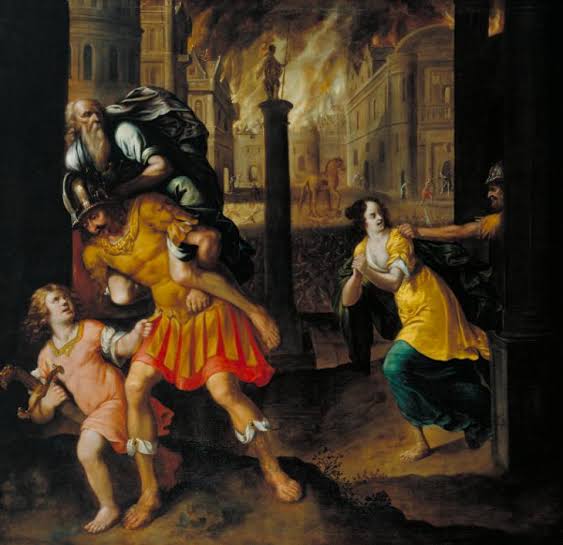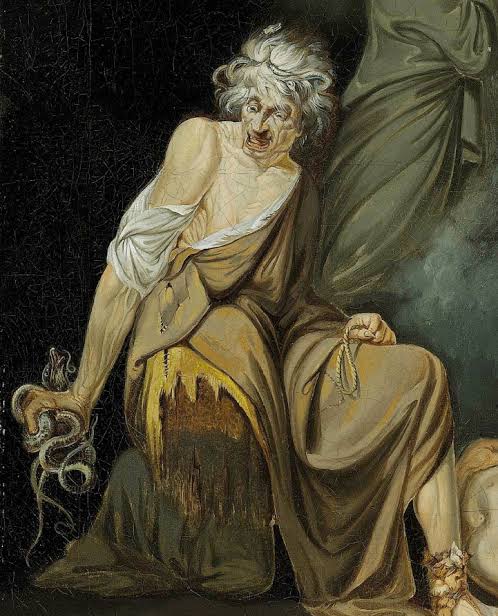In a former life back in 2006/2007 I wrote a series of posts suggesting that the “we passages” in the Book of Acts were the author’s technique of vicariously bringing his Roman readers into his narrative as they followed the story of the founding of a second kingdom in Rome. Rome was replacing Jerusalem as the “headquarters” for God’s people and Acts was written primarily for a Roman audience. Those “we passages” begin with Paul leaving the region of Troy, or “the Troad”, and beginning a wandering mission that saw a temporary delay in Jerusalem where his destiny was almost brought to an end, before finally reaching Rome where the book ends. I suggested, encouraged by the views of Marianne Palmer Bonz iirc, that the structure of the narrative was built around the Roman founding epic of Aeneas leaving Troy to found Rome, being detoured on the way via Carthage where his destiny was almost overturned.
Twelve years later and here I am with two new books that encourage me to wonder if that interpretation of Acts, and in particular the “we passages”, had something going for it.
The first one:
- Erskine, Andrew. 2001. Troy between Greece and Rome: Local Tradition and Imperial Power. Oxford ; New York: Oxford University Press.

Erskine confirms that the Aeneas epic and Trojan origins of Rome was certainly a major propaganda myth during the time of emperor Augustus and was still being popularized throughout the period of the Julio-Claudian emperors. That’s the era of the “dynasty” stemming from Julius Caesar (more specifically from his distant nephew Augustus Caesar) through to emperor Nero. Speaking of the “Augustan preoccupation” with Aeneas, . . . .
Many ancient writers are introduced into his discussions about how Aeneas escaped from Troy, his route to Italy and especially on the foundation of Rome itself. . . .
Aeneas is leading his son Ascanius by the right hand, while his father Anchises sits perched upon his left shoulder. This image has been found in many parts of the empire on coins, finger rings, and lamps, in painting, relief sculpture, and statuary, and the most likely explanation for this uniformity is that they are all based on a common model, namely the statue of Aeneas in the Forum of Augustus.
(Erskine, pp. 29 f)
That was in the Augustan period. That technically ended with the death of Augustus in 14 CE. The preoccupation with the story of Aeneas fleeing Troy and being destined to be responsible for the founding of Rome was the consequence of the victory of Julius Caesar’s “nephew” Augustus Caesar over Mark Anthony concluding the civil war period:
The predominance of the Trojan myth may have been the result of the political rivalries of various families; just as the Mamilii favoured Odysseus and the Fabii Herakles, so the Iulii [=Julians] and the Memmii favoured the Trojans. Aineias’ [=Aeneas’] martial prowess could perhaps have appealed to the militaristic Romans more than Odysseus’ cunning, or maybe the attraction lay in Aineias’ piety.66
66 On the piety of Aeneas see Bömer 1951: 39–49, esp. 47–9.
. . . . .
Ilion [=Troy] had a special place in the ideology of the Iulio-Claudians, a dynasty that invoked Trojan ancestry to justify its ascendancy in Rome. . . . In acting as patrons of Ilion Caesar and Augustus were acting in the same way as successive rulers in the east had done before them over the centuries. . . . Support for Ilion and promotion of Trojan ancestry may have gone some way towards repairing relations with Asia Minor at least.
(pp. 145, 245 — I have not had access to the Bömer reference. Virgil certainly dwells heavily on Aeneas’s piety in his epic poem The Aeneid)
Troy remained significant to Romans after the death of Nero in 69 CE, though. The emperor Hadrian paid a special visit to Troy in 124 CE. If Trojans did feel they were being neglected in the imperial propaganda they made up for it by reasserting their distinctive place in the mythohistory of Rome:
In response Ilion [=Troy] may have felt the need to reassert its Trojan identity; it is in the reign of Hadrian that Hektor makes his first appearance on Ilian coins, the first new Trojan hero to do so since Aineias and Anchises about 150 years before. Caracalla’s visit in the early third century was more a homage to Alexander and Achilles than to Troy or Rome’s Trojan past.Nevertheless, Rome’s Trojan origins are again in evidence when Constantine is planning his new city in the East. He is said to have begun construction of the city on the plain in front of Ilion before God intervened and directed him to Byzantion. The story, however, may merely be the product of later mythologies about the foundation of Constantinople.
(p. 253)
But concerning the time of the composition of Acts we have more concrete evidence in the epic poem of Lucan. Lucan was forced by Nero to commit suicide in 65 CE. He was not allowed to live long enough to complete his epic poem Pharsalia about the war between Julius Caesar and Pompey. That poem is a total opposite of everything Virgil wrote about the journey of Aeneas from Troy to Italy. Lucan’s epic has even been called an anti-Aeneid because it strongly appears to be an attempt to undo all the idealism in Virgil’s epic about Aeneas.
On Lucan’s poem as ‘anti-Aeneid’, Conte 1994: 443–6.
(p. 249. Google Books gives access to 443-444, 446, but not 445. Anyone has access to p. 445 will gain my appreciation if they could forward it to me.)

Lucan evidently knew of Virgil’s Aeneid and sought to undo what to him was its sickening idealism. That is, as late as the reign of Nero (54-68 CE) the ideal of the pious Aeneas fleeing the great city of Troy to found the Roman nation was known well enough for Lucan to write an “anti-epic”, an “anti-Aeneid”, in response.
One passage in Lucan’s epic, Pharsalia, speaks of a Thessalonian witch who can raise the dead and speak in horrific sounds to tell the future (book 6). It is difficult not to be reminded of Paul exorcising a demon-possessed girl in the same region who speaks of the future with respect to Paul in Acts 16:11-15.
So the Aeneid, the grand propaganda epic of the heroic and pious Aeneas fleeing Troy to commence his God-ordained destiny to found the imperial city of Rome, was “a topic of conversation”, let’s say, towards the end of the first century CE at least. The point was, of course, that the Roman rulers, and then Rome itself, were the spawn of the great Troy.
The second:
- Smith, Warren S. 2012. “We-Passages in Acts as Mission Narrative.” In The Ancient Novel and Early Christian and Jewish Narrative: Fictional Intersections, edited by Marília P. Futre Pinheiro, Judith Perkins, and Richard Pervo, 171–88. Groningen: Barkhuis.
I’m not alone in proposing that the “we” in Acts is an attempt by the author to draw the readers into the story and its destiny.
I will argue that the use of the passages is probable evidence of the presence of the author or his source along with Paul . . . and that the we-passages serve the additional function of pulling the reader into the story by implying ‘our’ presence and participation, at least in spirit, in the Gospel mission. Parallels for this device can be found elsewhere, especially in early Christian literature. Often in such visionary passages, the narrator identifies the person reporting the dream as ‘he,’ but this is quickly followed by a reference to the effect which the vision has on ‘me’ or ‘us’, and thus the vision or prophecy is linked to the work at hand: its truth is established by a divine blessing, or the author (distinguished from the one who reports the vision) chooses this moment to step into the narrative with a personal reflection or mention of mission: a mission into which the reader may be implicitly drawn. The emergence of the author into his narrative gives permission for the extension of his message out to include the community of which he is a part.
(Smith, pp. 171 f.)
It’s time . . . Continue reading “Rome, Troy and Aeneas — model for the story of Acts?”
